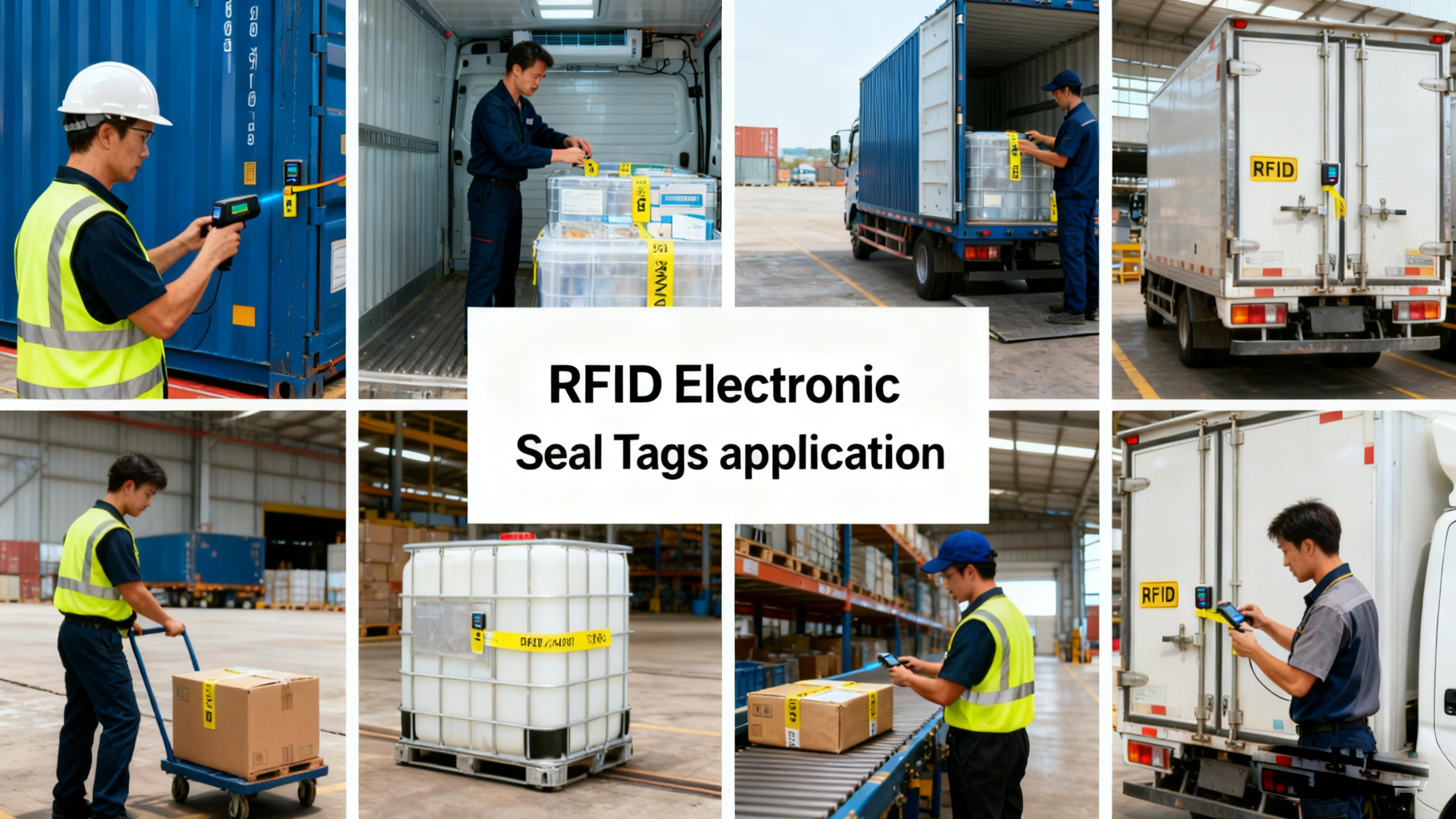In today’s global trade environment, billions of dollars’ worth of goods move across supply chains every day. Businesses are under constant pressure to protect shipments, reduce theft, and guarantee on-time deliveries. Traditional locks and manual checks no longer meet the demands of fast-paced logistics. This is where RFID electronic seal tags step in, offering a modern solution that combines physical security with digital tracking for stronger and more efficient shipment protection.
Shipment security has gone through major changes over the years. For centuries, locks and keys were the main tools to secure goods. Later, tamper-evident tape and plastic seals added another layer of protection. However, as global trade expanded, these methods revealed their limitations, especially in large-scale and cross-border logistics. RFID electronic seals have brought a breakthrough by merging tamper evidence with real-time data tracking, making it possible to safeguard shipments while improving overall supply chain efficiency.
RFID, short for Radio Frequency Identification, is a wireless system that uses radio waves to exchange data. An RFID setup usually includes three parts: a tag that holds information, a reader that scans the tag, and a backend system that processes the data. Unlike barcodes, RFID does not need direct line-of-sight and can scan multiple items at once. This makes it faster, more accurate, and more practical for logistics, where thousands of goods are processed every hour.

RFID electronic seal tags combine the features of traditional one-time-use seals with digital identification. Once attached to a container or pallet, the seal cannot be removed without leaving visible damage. At the same time, its embedded RFID chip stores unique information about the shipment. During transit, RFID readers at warehouses, checkpoints, or ports scan the seal to verify its condition and record its status. If tampering occurs, advanced seals can trigger alerts in real time. All data is sent to management systems, giving logistics teams complete visibility over shipment security.
The durability of RFID electronic seal tags comes from their smart design and materials. The body and strap are often made of ABS engineering plastic, which is strong, weather-resistant, and suitable for outdoor environments. Inside, a steel core with a steel ball locking mechanism ensures that once the strap is secured, it cannot be reopened without breaking. The RFID chip is embedded safely, allowing long-lasting performance even in harsh conditions. These seals are also customizable with company logos, serial numbers, barcodes, or UID codes, which helps with brand protection and detailed tracking.
RFID electronic seals support different frequencies depending on their use. UHF (915 MHz) allows long-range scanning for bulk logistics, while HF (13.56 MHz) is ideal for shorter-range applications like access control. LF (125 kHz) is used in vehicle-related security. Many seals comply with international standards such as ISO 18000-6C, ISO 14443A, and ISO 15693, ensuring global compatibility. For added safety, modern seals also use encryption to protect data. Once the seal is broken, the RFID chip becomes inactive, preventing reuse and ensuring tamper-proof security.
The applications of RFID electronic seals are broad and practical across industries. In container shipping, they secure goods moving through ports and customs clearance. In cold-chain logistics, seals help ensure that food and pharmaceuticals remain safe from tampering during transport. For hazardous goods, seals add an extra layer of safety and regulatory compliance. In e-commerce and express delivery, they provide customers with greater trust through transparent tracking. Even in vehicle transportation, RFID seals improve access control and safety at depots and warehouses.
The advantages of RFID electronic seal tags are clear. First, they greatly improve security by preventing unauthorized access and providing unique identification for each shipment. Second, they reduce human error by automating data collection and scanning processes. Third, they make supply chains more transparent, allowing managers to see exactly when and where goods are checked. These benefits not only improve efficiency but also help companies build stronger trust with their clients.
Like any technology, RFID seals also face some challenges. The initial investment can be higher compared to traditional seals. Integration with existing logistics systems requires planning, and different international standards can sometimes cause compatibility issues in cross-border shipping. However, the long-term savings in reduced theft, fewer errors, and improved efficiency often outweigh these challenges.
Looking ahead, RFID seals will play an even bigger role in digital logistics. As they integrate with IoT platforms, blockchain systems, and big data analytics, companies will have better tools for real-time monitoring and risk prevention. RFID electronic seal tags are not just about security—they are about building smarter, more connected supply chains for the future.
RFID electronic seal tags have redefined logistics security by combining tamper-proof features with advanced tracking. They offer businesses a reliable way to protect assets, ensure compliance, and improve transparency in global trade. By adopting this technology, companies can stay competitive in an increasingly complex supply chain environment.
ZD Technology provides high-quality RFID electronic seal tags and customized RFID solutions to help businesses strengthen logistics security and efficiency. Contact us today to learn more about how we can support your supply chain needs.
Do you need a professional team to provide you with solutions? Contact us for a quote
Let us discuss it with you.